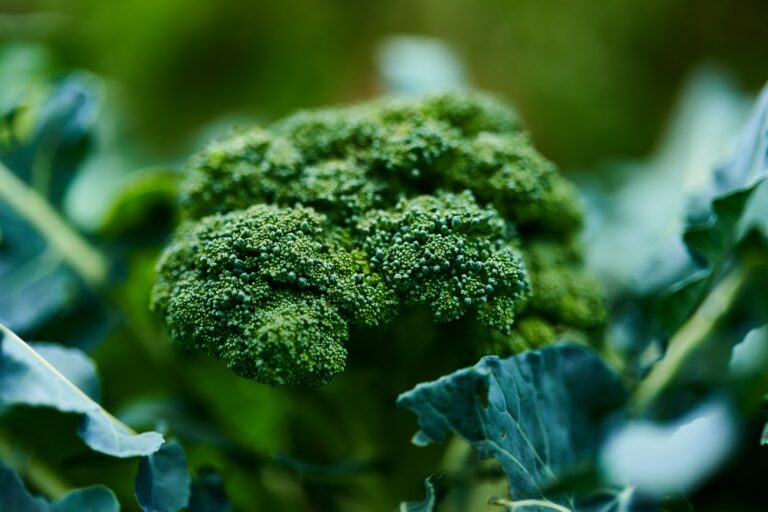Broccoli (Brassica oleracea var. italica) is a really interesting plant that belongs to the same family as cabbage, kale, and Brussels sprouts. The plant has a sturdy stem and beautiful blue-gray leaves that are arranged around a trunk-like structure. What’s fascinating is that the part we eat is actually the buds of the broccoli flower! If you leave it unharvested, it would bloom into small greenish-yellow flowers.
Most common Broccoli varieties:
- Green Magic
- Purple sprouting
- Bestar
- Calabrese
- Romanesco
Care
Taking care of a broccoli plant can be quite easy, as long as you keep a few things in mind. Firstly, similarly to pumpkins, tomatoes and mango trees, the plant needs a good amount of sunlight, so it’s best to plant it in a spot with full sun. The soil should be rich and well-draining, and you should keep it moist without getting it too soggy. As for temperature, broccoli thrives in temperatures between 65 and 70 degrees Fahrenheit. Finally, adding compost and using organic low-nitrogen fertilizer can help the plant grow healthy and strong.
- Soil: Broccoli thrives in soil that is rich in organic matter and has a loamy texture. It’s important that the soil is well-draining, and has a slightly acidic to neutral pH level.
- Light: A broccoli plant needs at least six hours of direct sunlight on most days, which means it grows best in a spot with full sun.
- Water: Keep the soil consistently moist without allowing it to become too waterlogged. Watering from the base of the plant is preferable to overhead watering, which can lead to rot. Around 1 to 1.5 inches of water per week is usually enough.
- Temperature: For optimal growth, broccoli thrives in temperatures ranging from 65 to 70 degrees Fahrenheit. However, temperatures that exceed approximately 80 degrees Fahrenheit can cause the plant to bolt.
Propagation
If you want to propagate broccoli plants, it’s best to start by planting seeds outdoors in the spring, around two to three weeks before the last projected frost date. You can also get a head start by starting seeds indoors about six to eight weeks before the last frost date. In the fall, plant seeds in the garden about 85 to 100 days before the first projected fall frost date.
Make sure you choose a sunny area with soil that drains well. To plant your seeds, simply plant them about 1/2 inch deep and a few inches apart, with rows spaced 12 to 20 inches apart. After your seedlings have emerged, thin them out to about 12 to 20 inches apart.
Give it a read

Common pests
Frequently Asked Questions
It typically takes around 55 to 100 days for broccoli to grow, depending on the variety and growing conditions.
Can you eat broccoli leaves?
Yes, broccoli leaves are edible and can be cooked and eaten just like other leafy greens. They have a slightly milder taste than the broccoli florets and are a good source of vitamins and minerals.
Can dogs eat broccoli?
Certainly! Dogs can enjoy broccoli in moderation as part of a healthy diet. This veggie is full of essential vitamins and fiber that can benefit your furry friend. Just keep in mind that broccoli may be difficult for dogs to digest, especially if it’s not cooked.
How much broccoli do you get from one plant?
Each plant typically produces a single large head initially, and once harvested, it will continue to produce smaller side flower heads for a few weeks.
